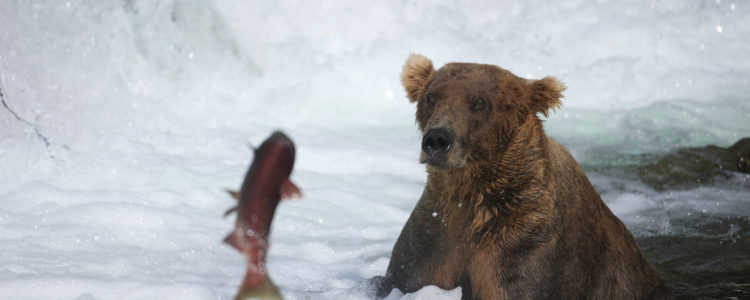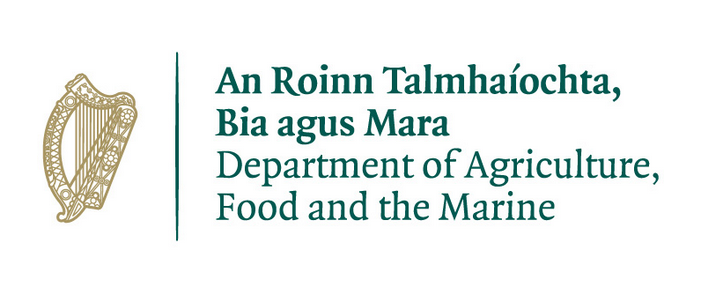
Non Native species
Non-Native or 'Invasive' Species
Non-native species can pose a major threat to our indigenous fauna and flora. When removed from predators, competitors, and other controls of their original environment; non-native species can become invasive and outcompete and overwhelm their new neighbours.
As well as bringing human diseases to new places mankind has also translocated a great many species of fauna and flora, often with disastrous consequences.
On a global scale invasive species are one of the major causes of loss of biodiversity. In Ireland, we only have to look at the vigour of the introduced rhododendron and its rapid invasion of our upland oak woods, bogs and heath to realise the threat of non-native species.
Japanese knotweed, American mink, grey squirrel, along with many other alien species of flora and fauna, have also proved to be a real nuisance in this country.
With the amount of modern day travel and trade between countries and continents the threat of introduction of invasive species is greater than ever. The arrival of alien species nowadays is mostly accidental; however, some misguided people may still attempt to introduce new species for sporting, private collections or other purposes.
Legal Situation
In the interests of safeguarding native species, it has been necessary to introduce new legislation controlling the importation and dispersal of certain species.
Section 52 of the Wildlife Act, 1976 as amended provides for The Minister for Arts, Heritage and the Gaeltacht, if considered necessary, to make regulations prohibiting the possession or introduction of any species of wild bird, wild animal or wild flora or any part, product or derivative of such wild bird, wild animal or wild flora which may be detrimental to native species.
Where non-native species of wild bird, wild animal or wild flora or any part, product or derivative of such wild bird, wild animal or wild flora have been introduced, the Minister shall, to the extent that it is feasible and appropriate, take measures to ensure that such introductions do not pose a potential hazard to native stocks.
In relation to exotic species of wild animals, wild birds, plants, flowers, roots, seeds or spores only – any person who –
- turns loose, wilfully allows or causes to escape any such species of wild animal or the spawn of such an animal or wild bird or the eggs of such wild bird,
- transfers any such species of wild animal or the spawn of such wild animal or wild bird or the eggs of such wild bird from any place in the State to any other place in the State for the purpose of establishing it in a wild state in such other place,
- plants or otherwise causes to grow in a wild state in any place in the State any such species of flora, or the flowers, roots, seeds or spores of flora
otherwise than under and in accordance with a licence granted in that behalf by the Minister shall be guilty of an offence.
Regulations 49 and 50 of the European Communities (Birds and
Natural Habitats) Regulations 2011 adds to and strengthens the provisions of section 52 of the Wildlife Acts to give full effect to the Habitats Directive. They deals with the prohibition on the introduction, possession, trade and dispersal of certain non-native species, save in accordance with a licence granted by the Minister for Arts, Heritage and the Gaeltacht
Regulation 49 provides for the prohibition or restriction of the breeding, reproduction, growing, release or dispersal of certain animals and plants that are not ordinarily resident in the State or a species specified in the Third Schedule to the Regulations, principally invasive alien species, that pose or are likely to pose a threat to native species and European sites.
The minister can grant a licence for such actions (e.g. for purposes of research) when satisfied that it does not pose a threat
Regulation 50 provides for the prohibition or restriction of the keeping, sale, advertisement, distribution and transport of species of animal or plants and certain vector material specified in the Third Schedule of these Regulations.
For further info see –
Section 52 of the Wildlife Act, 1976 as amended by section 56 of the Wildlife (Amendment) Act 2000, and
Regulations 49, 50 and 74 together with the Third Schedule of the European Communities (Birds and Natural Habitats) Regulations 2011
Wildlife Licensing Unit,
National Parks and Wildlife Service,
Department of Culture, Heritage and the Gaeltacht,
90 King Street North,
Dublin 7
Email: wildlifelicence@chg.gov.ie
LoCall 1890 383 000
List of non-native / alien / invasive species
Plants – terrestrial/ riparian
- American skunk cabbage (Lysichiton americanus)
- Bohemian knotweed (Fallopia x bohemica)_IFI
- Giant hogweed (Heracleum mantegazzianum)
- Giant knotweed (Fallopia sachalinensis)_IFI
- Giant rhubarbs (Gunnera species)
- Giant rhubarbs (Gunnera species)
- Himalayan balsam (Impatiens glandulifera)
- Himalayan knotweed (Persicaria wallichii)
- Hottentot fig (Carpobrotus edulis)
- Japanese knotweed (Fallopia japonica)_ Data Centre
- Rhododendron (Rhododendron ponticum)
Plants – aquatic
- Creeping water primrose (Ludwigia peploides)
- Curly waterweed (Lagarosiphon major)
- Floating pennywort (Hydrocotyle ranunculoides)
- Japanese kelp (Undaria pinnatifida)
- New Zealand Pigmyweed (Crassula helmsii)
- Nuttall’s waterweed (Elodea nuttallii)
- Nuttall’s waterweed (Elodea nuttallii)_IFI
- Parrot’s feather (Myriophyllum aquaticum)
- Water fern (Azolla filiculoides)
- Wire weed (Sargassum muticum)
Animals
- American mink (Mustela vison)
- Asian clam (Corbicula fluminea)
- Asian hornet (Vespa velutina)
- Bank vole (Myodes glareolus)
- Brown hare (Lepus europaeus)
- Chinese mitten crab (Eriocheir sinensis) Data Centre
- Feral ferret (Mustela furo)
- Grey squirrel (Sciurus carolinensis) Data Centre
- Harlequin ladybird (Harmonia axyridis)
- Killer shrimp (Dikerogammarus villosus)
- Leathery sea squirt (Styela clava) GB NNSS
- Muntjac deer (Muntiacus reevesi)
- New Zealand flatworm (Arthurdendyus triangulatus)
- Sea squirt (Didemnum vexillum)
- Siberian chipmunk (Tamias sibiricus)
- Signal crayfish (Pacifastacus leniusculus)
- Slider species (Trachemys scripta)
- Slipper limpet (Crepidula fornicata)
- Wild boar hybrids/Feral pig (Sus scrofa)
- Zander (Sander lucioperca)
- Zebra mussel (Dreissena polymorpha)
Reporting an non-native crime or sighting
To report suspected illegal activity contact the National Parks & Wildlife Service
Tel: 01-888 3242 or LoCall 1890 383 000
For a pdf of contact numbers for your local NPWS Conservation Ranger click HERE
You can find out more, and report sightings to Invasive Species Ireland and / or
The National Biodiversity Data Centre is the national centre dedicated to the collation, management, analysis and dissemination of data and information on Ireland’s biological diversity.
It serves as a hub for the exchange of data between governmental organisations, NGOs, research institutions and volunteer data recorders.
Together is better
“The importance of close collaboration with Northern Ireland and Great Britain cannot be overstated. Every one of us can play a vital role in tackling the threat of invasive species.
If you suspect you have seen an invasive species please report it to the Data Centre. If there is an invasive species where you are fishing, hiking, or landscaping, please take measures to prevent spread, such as cleaning equipment.
Colette O’Flynn, manager of the National Invasive Species Database, welcomes queries and sightings.
Providing a photograph aids identification.
To check identification guides, submit sightings, see interactive distribution maps or species alerts, please visit: biodiversityireland.ie/projects/invasive-species or CLICK HERE TO SUBMIT A REPORT ”
[an article on ‘Alien Invasion in Biodiversity Ireland magazine]
